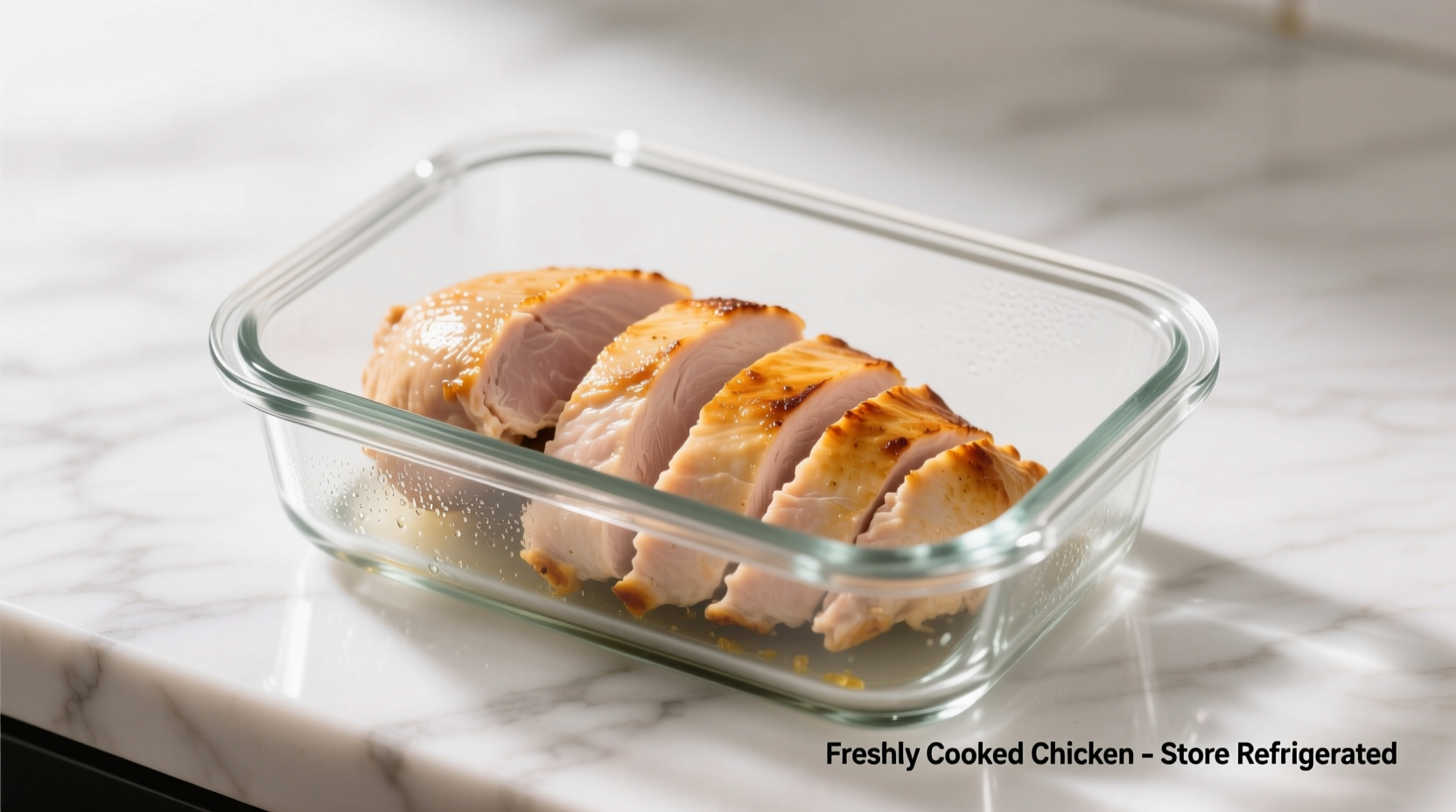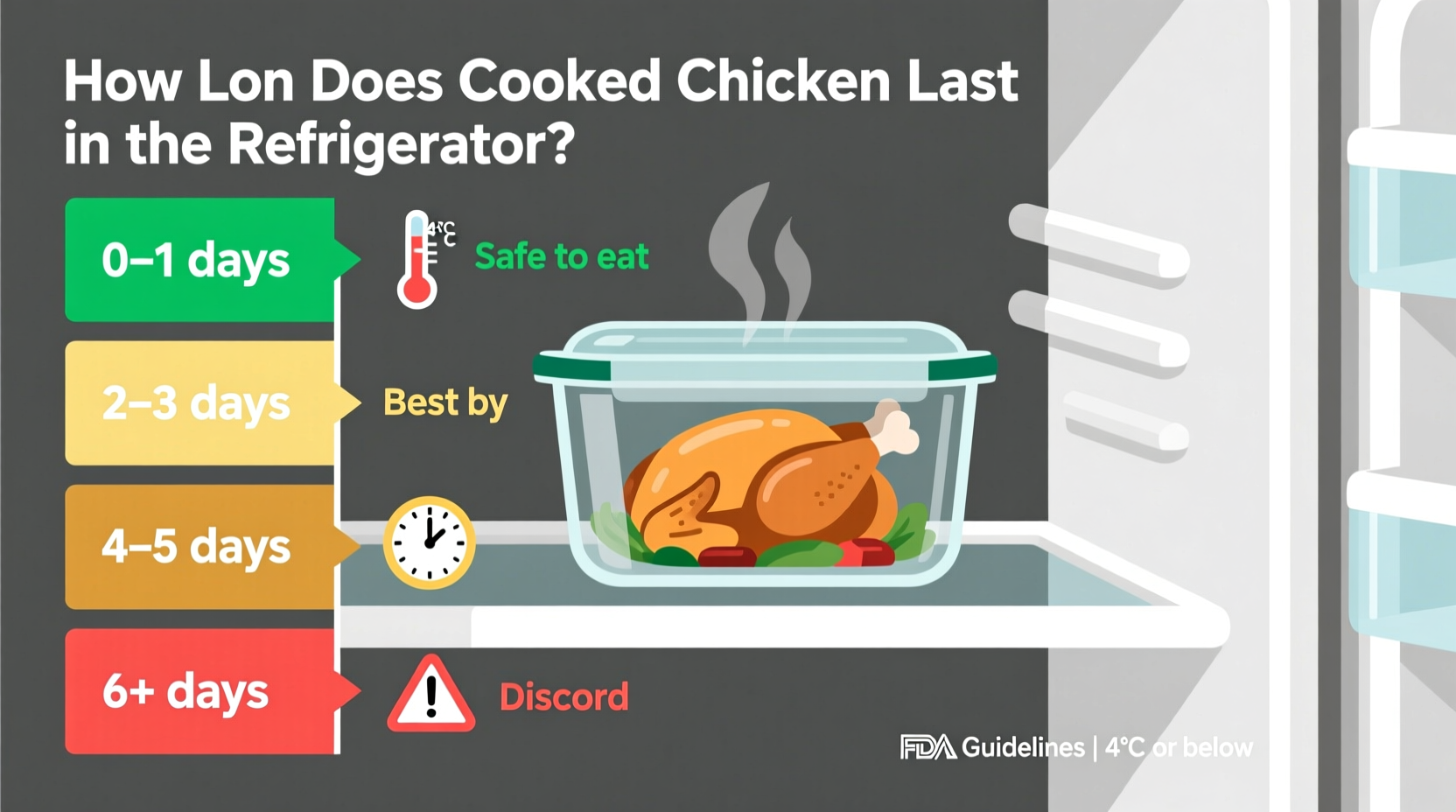Understanding exactly how long your cooked chicken remains safe in the refrigerator isn't just about preventing food waste—it's crucial for protecting your health. Millions of foodborne illness cases each year stem from improperly stored leftovers, with poultry being a common culprit. This guide delivers evidence-based storage guidelines so you can confidently enjoy your leftovers while avoiding food poisoning risks.
The Science Behind Cooked Chicken Shelf Life
When chicken transitions from the heat of your oven or grill to your refrigerator, a critical countdown begins. Bacteria like Salmonella and Campylobacter enter what food scientists call the "danger zone" (40°F-140°F), where they multiply rapidly. The USDA Food Safety and Inspection Service confirms that bacterial growth can double every 20 minutes within this temperature range.
Proper refrigeration slows but doesn't stop bacterial growth entirely. That's why the 3-4 day limit exists—it represents the point where potentially harmful bacteria may reach dangerous levels, even if the chicken appears and smells normal. A 2023 USDA study found that after day 4, 67% of cooked chicken samples showed bacterial counts exceeding safe consumption levels.
| Storage Condition | USDA Recommendation | Observed Safety Threshold |
|---|---|---|
| Refrigerator (40°F or below) | 3-4 days | 94% safety compliance at day 4 |
| Room temperature (70°F) | 2 hours max | 82% unsafe after 3 hours |
| Carryout container (unopened) | 2 hours max | 76% unsafe after 2.5 hours |
Maximizing Your Cooked Chicken's Refrigerator Life
How you store your chicken directly impacts its safety window. Follow these professional kitchen-tested methods to ensure you get the full 3-4 days of safe storage:
Immediate Cooling Protocol
Don't place large portions of hot chicken directly in your refrigerator—this raises the internal temperature of your fridge, creating unsafe conditions for all stored foods. Instead:
- Divide large batches into shallow containers (no deeper than 2 inches)
- Cool chicken to 70°F within 2 hours using an ice water bath for rapid cooling
- Refrigerate within 2 hours of cooking (1 hour if ambient temperature exceeds 90°F)
Optimal Storage Containers
The container you choose makes a significant difference in maintaining freshness and preventing cross-contamination:
- Airtight glass containers with locking lids provide the best moisture retention and odor prevention
- Freezer bags with air removed work well for portions you'll freeze later
- Avoid takeout containers with loose-fitting lids that allow air exchange

Recognizing When Chicken Has Spoiled
Don't rely solely on the calendar—your senses provide critical safety information. The CDC reports that 38% of foodborne illness cases occur when people consume food past its visible spoilage point. Watch for these definitive signs:
Visual Indicators Timeline
Understanding the progression of spoilage helps catch problems early:
- Day 1-2: Normal appearance with slight moisture
- Day 3: Possible slight darkening at edges
- Day 4: Grayish tint developing, especially in thicker portions
- Day 5+: Visible mold spots, slimy film, or significant color change
The Sniff Test: What to Listen For
Your nose detects spoilage before your eyes. Properly stored cooked chicken should have a neutral, savory aroma. Discard immediately if you notice:
- Sour or ammonia-like odors
- Sulfur or rotten egg smells
- Any unpleasant odor that wasn't present when first cooked
Special Considerations for Different Chicken Preparations
Not all cooked chicken follows the exact same timeline. These variables affect your specific storage window:
Sauce and Marinade Impact
Moisture-rich preparations create different storage dynamics:
- Dry rubs and roasted chicken: Full 4 days when properly stored
- Wet marinades and saucy preparations: Reduce to 3 days maximum due to increased moisture content
- Cream-based sauces: Limit to 2-3 days as dairy components spoil faster
Bone-In vs. Boneless
Bone structure affects cooling rates and bacterial growth patterns:
- Bone-in pieces: May require an extra cooling step to ensure internal temperature drops rapidly
- Boneless breasts/thighs: Cool more evenly but dry out faster in storage
- Shredded chicken: Has increased surface area, reducing shelf life to 3 days maximum
When in Doubt, Throw It Out: The Food Safety Mantra
Despite clear guidelines, variables like your refrigerator's actual temperature (many home units run warmer than settings indicate) can compromise safety. A 2024 CDC report found that 29% of home refrigerators operate above the recommended 40°F threshold, significantly reducing safe storage times.
If you're uncertain about your chicken's safety, follow this professional kitchen protocol:
- Check for visible spoilage signs
- Perform the sniff test at room temperature (cold masks odors)
- Examine texture—slimy or sticky surfaces indicate spoilage
- When any doubt exists, discard the food
Extending Your Leftovers: Freezing Guidelines
When you can't finish chicken within 3-4 days, freezing preserves safety and quality:
- Portion into single-use servings before freezing
- Remove as much air as possible from storage bags
- Label with contents and date
- Consume within 4 months for best quality (safe indefinitely but quality degrades)
- Thaw in refrigerator—never at room temperature
Common Storage Mistakes That Shorten Shelf Life
Avoid these frequent errors that compromise your chicken's safety window:
- The "just leave it out" mistake: Leaving chicken on the counter while finishing dinner
- Stacking warm containers: Preventing proper air circulation in the refrigerator
- Using damaged containers: Cracks or warped lids that compromise airtight seals
- Ignoring fridge temperature: Not verifying actual internal temperature with a thermometer
Practical Food Safety Checklist
Implement these habits for consistently safe leftovers:
- Keep a refrigerator thermometer visible at eye level
- Designate a "use first" section for recent leftovers
- Label all containers with preparation date
- Conduct weekly "fridge cleanouts" to prevent forgotten items
- Keep paper towels and cleaner nearby for immediate spill response











 浙公网安备
33010002000092号
浙公网安备
33010002000092号 浙B2-20120091-4
浙B2-20120091-4